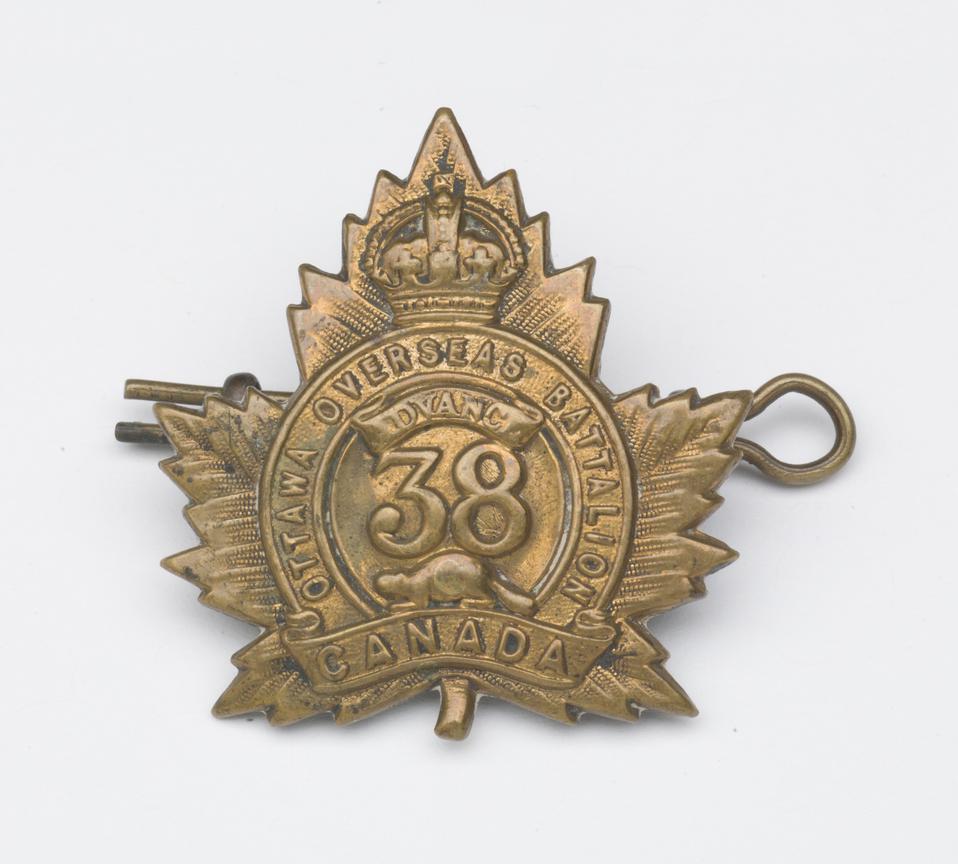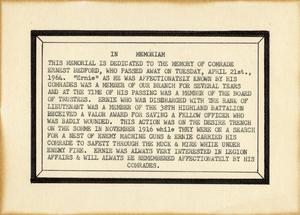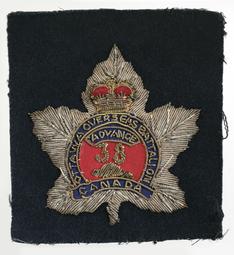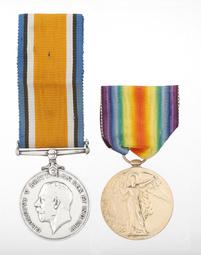Unit
38th Canadian Infantry Battalion (Ottawa)
Branch
Infantry
Service Component
Canadian Expeditionary Force
Service Number
410450
birth
1896/05/20
Cambridgeshire, United Kingdom, England
death
1964/08/21
Cornwall, Ontario, Canada
grave
St Lawrence Union Cemetery, Stormont, Ontario
Gender
Male
Ernest Joseph Bedford was born in Wittlesey, Cambridgeshire, United Kingdom, on 20 May 1896. He emigrated to Canada in 1912 with his parents, Joseph and Elizabeth Bedford. They settled in the Cornwall, Ontario area where both father and son found employment as mill hands in local pulp and paper operations. Ernest Bedford attested to the Canadian Expeditionary Force (CEF) in Cornwall on 8 January 1915 and was posted to the 38th Canadian Infantry Battalion (Ottawa), which was being formed in Ottawa at that time.
After initial training in the Ottawa area, the Battalion was sent to Bermuda at the end of July 1915 to relieve the British Garrison there. During its time in Bermuda, the unit was credited with achieving a high standard of readiness. The 38th departed Bermuda on 31 May 1916 arriving in the United Kingdom two weeks later. They proceeded to Camp Borden and were assigned to the 4th Canadian Division. The Division was then sent to France on 14 August and, by the 17th, was under fire in Poperinghe, Belgium. In late September the unit was marched south to join the Canadian operations in the later stages of the Somme offensive. On 18 November, the 38th attacked the Desire Trench and Grandcourt positions of the German army, achieving its objectives. During this attack Bedford noted that an officer in his unit, leading an attack from the Desire Trench area, had been badly wounded and carried him back under fire.
The 38th Battalion was in the thick of much of the fighting from then on, including an attack on an objective over the crest of Vimy Ridge in April 1917. Bedford was promoted to Corporal after this action. The 38th continued in operations in the Lens area, engaging in some heavy fighting around La Coulotte and Avion, sustaining some 250 casualties on 17 June 1917. One of those casualties was Corporal Bedford, who sustained a gunshot wound to the neck and was evacuated to the 23rd Casualty Clearing Station. He returned to duty on 7 August 1917. The unit went back to the Ypres area where it took part in the Battle of Passchendaele and, by the spring of 1918, it was in the line at Avion near Hill 70 reinforcing elements of the British Army hard pressed in the Kaiserschlacht Offensive. At this time Bedford was promoted again to Lance Sergeant and, on 11 May 1918, he was sent back to the United Kingdom for training in preparation for commissioning. He received his commission on 11 August 1918 and was assigned to the 6th Reserved Division in England. About this time Lieutenant Bedford was hospitalized for an illness. A medical board found him fit for garrison duty only. His treatment lasted well in to 1919 and he did not sail for Canada until 8 August of that year. He was discharged on 28 August 1919 in Ottawa.
He returned to his parents’ home in Moulinette, Ontario, and Bedford continued his work as a mill hand in a local pulp and paper company. In 1922 he married a co-worker, Viola Buchner, who appears to have died shortly thereafter. On 18 October 1926, he married his wife’s sister, Lillian Buchner. In 1949 the couple was living in Mille Roches, Ontario, still working at the local mill. Bedford died 21 August 1964 and is buried with his wife in the St Lawrence Union Cemetery in Stormont, Ontario.





